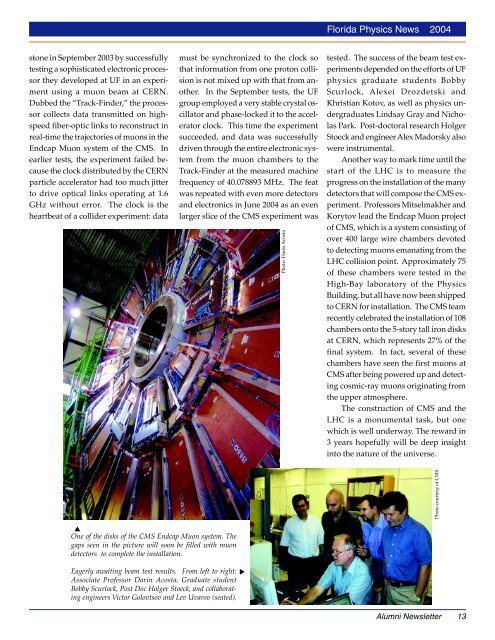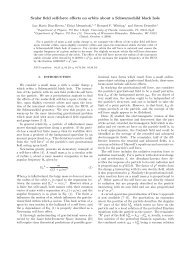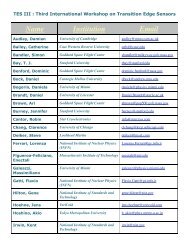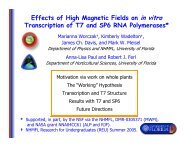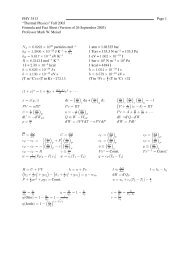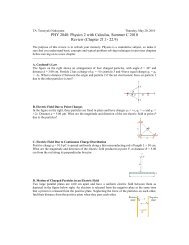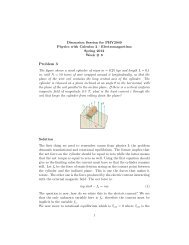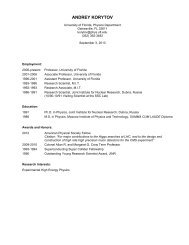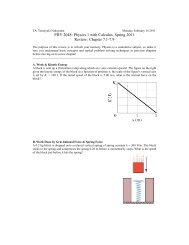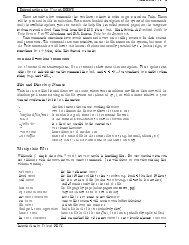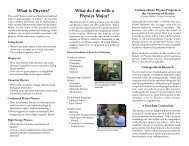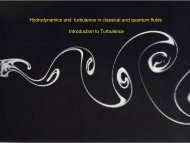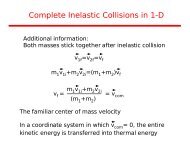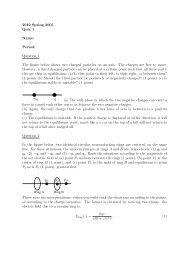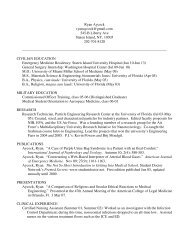Florida Physics News - Department of Physics - University of Florida
Florida Physics News - Department of Physics - University of Florida
Florida Physics News - Department of Physics - University of Florida
You also want an ePaper? Increase the reach of your titles
YUMPU automatically turns print PDFs into web optimized ePapers that Google loves.
<strong>Florida</strong> <strong>Physics</strong> <strong>News</strong> 2004<br />
stone in September 2003 by successfully<br />
testing a sophisticated electronic processor<br />
they developed at UF in an experiment<br />
using a muon beam at CERN.<br />
Dubbed the “Track-Finder,” the processor<br />
collects data transmitted on highspeed<br />
fiber-optic links to reconstruct in<br />
real-time the trajectories <strong>of</strong> muons in the<br />
Endcap Muon system <strong>of</strong> the CMS. In<br />
earlier tests, the experiment failed because<br />
the clock distributed by the CERN<br />
particle accelerator had too much jitter<br />
to drive optical links operating at 1.6<br />
GHz without error. The clock is the<br />
heartbeat <strong>of</strong> a collider experiment: data<br />
must be synchronized to the clock so<br />
that information from one proton collision<br />
is not mixed up with that from another.<br />
In the September tests, the UF<br />
group employed a very stable crystal oscillator<br />
and phase-locked it to the accelerator<br />
clock. This time the experiment<br />
succeeded, and data was successfully<br />
driven through the entire electronic system<br />
from the muon chambers to the<br />
Track-Finder at the measured machine<br />
frequency <strong>of</strong> 40.078893 MHz. The feat<br />
was repeated with even more detectors<br />
and electronics in June 2004 as an even<br />
larger slice <strong>of</strong> the CMS experiment was<br />
Photo: Darin Acosta<br />
tested. The success <strong>of</strong> the beam test experiments<br />
depended on the efforts <strong>of</strong> UF<br />
physics graduate students Bobby<br />
Scurlock, Alexei Drozdetski and<br />
Khristian Kotov, as well as physics undergraduates<br />
Lindsay Gray and Nicholas<br />
Park. Post-doctoral research Holger<br />
Stoeck and engineer Alex Madorsky also<br />
were instrumental.<br />
Another way to mark time until the<br />
start <strong>of</strong> the LHC is to measure the<br />
progress on the installation <strong>of</strong> the many<br />
detectors that will compose the CMS experiment.<br />
Pr<strong>of</strong>essors Mitselmakher and<br />
Korytov lead the Endcap Muon project<br />
<strong>of</strong> CMS, which is a system consisting <strong>of</strong><br />
over 400 large wire chambers devoted<br />
to detecting muons emanating from the<br />
LHC collision point. Approximately 75<br />
<strong>of</strong> these chambers were tested in the<br />
High-Bay laboratory <strong>of</strong> the <strong>Physics</strong><br />
Building, but all have now been shipped<br />
to CERN for installation. The CMS team<br />
recently celebrated the installation <strong>of</strong> 108<br />
chambers onto the 5-story tall iron disks<br />
at CERN, which represents 27% <strong>of</strong> the<br />
final system. In fact, several <strong>of</strong> these<br />
chambers have seen the first muons at<br />
CMS after being powered up and detecting<br />
cosmic-ray muons originating from<br />
the upper atmosphere.<br />
The construction <strong>of</strong> CMS and the<br />
LHC is a monumental task, but one<br />
which is well underway. The reward in<br />
3 years hopefully will be deep insight<br />
into the nature <strong>of</strong> the universe.<br />
Photo courtesy <strong>of</strong> CMS<br />
One <strong>of</strong> the disks <strong>of</strong> the CMS Endcap Muon system. The<br />
gaps seen in the picture will soon be filled with muon<br />
detectors to complete the installation.<br />
Eagerly awaiting beam test results. From left to right:<br />
Associate Pr<strong>of</strong>essor Darin Acosta, Graduate student<br />
Bobby Scurlock, Post Doc Holger Stoeck, and collaborating<br />
engineers Victor Golovtsov and Lev Uvarov (seated).<br />
Alumni <strong>News</strong>letter 13


